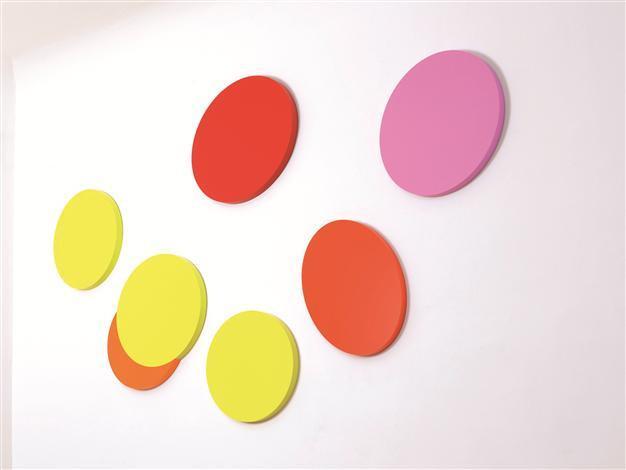Borusan Contemporary hosts a minimalist artist
ISTANBUL - Hürriyet Daily News

The exhibtion at Borusan Contemporary Museum displays the works of artist Gerwald Rockenschaub. Rockenschaub’s creations are detailed and diverse. One can perceive the shapes in Rockenschaub’s sculptures as forests or leaves or flowers. He feels more comfortable creating geometric forms.
Borusan Contemporary has opened its summer exhibition of the work of the famous Austrian artist Gerwald Rockenschaub. Rockenschaub’s sculptures and other works aim to take an architectural approach tailored to different parts of the Borusan Contemporary Museum’s space.
For Rockenschaub everything happens within his thoughts. He does not have a studio. “I do everything with my thoughts. I see the venue and think about my artwork and where it should go,” he said in an interview with the Hürriyet Daily News.
Rockenschaub is an artist who works meticulously, as he imagines how he should fit his sculptures to the venue. Rockenschaub prefers to see the venue first and then uses his imagination to decide how to work within it. Some of his current works are made purely from oak wood, while some also use plexiglass. Design comes to the fore in the exhibition and the individual works. Rockenschaub’s pieces have a “simple philosophy.” “I had a show in Zurich titled ‘Simple Philosophy,’” Rockenschaub said. His simple geometric shapes and the colors that he uses reflect deeper meanings. “Even though we call it simple, artists are never simple,” he said. “As an artist I offer something to the audience. Every artist has limited possibilities in terms of the mediums they use. I am more interested in abstract work,” Rockenschaub said, explaining the philosophy behind his work.
Rockenschaub’s shapesBut the shapes Rockenschaub creates are detailed and diverse. One can perceive the shapes in Rockenschaub’s sculptures as forests or leaves or flowers. Rockenschaub feels more comfortable creating geometric forms. “It is possible to perceive the works in different ways,” he said. “The audience has to choose how they want to perceive my works.”
It is not easy to categorize Rockenschaub’s artwork. His foil pictures, objects and site-related installations refer to many ideas and positions of modernism.
“People have to choose and find what is going on for themselves. My offer here is simple. Also it is about what can one do in art by creating sculptures, objects and paintings. My works are also about what an artist can do with art,” Rockenschaub said. Rockenschaub makes his works according to the architecture of the exhibition space, so the exhibition has also an architectural side. “I always add this to my shows.” While some of the pieces in the current show come from various collections, one was specially produced for the Borusan Museum.
Rockenschaub uses oak and other wood, MDF, metal, and plexiglass in his works. “I do not do anything by myself. All of those works are produced by a factory. I have the idea and develop it. Everything is on my computer,” said Rockenschaub. He works with particular companies for the laser work, the shaping, the cutting of the wood, and so on.
Rockenshaub’s standard commercial materials, symbolic minimalism and monochrome surfaces combine with the colors that he uses. For the artist, color is the essential material in his works. He uses color to deepen his objects and give them another look. While his colors reflect a childish style, the works are deepened by them.
DJing and being an artistRockenschaub also once had a career as a DJ. “I would not call myself a DJ anymore, because I am not DJing anymore.” Last year Rockenschaub hosted three performances. “In the 1990s I was DJing a lot and for seven years I continued.” DJing and being an artist are very different, Rockenschaub says. “When you are DJing the feedback of the audience is immediate and it is completely different when you receive immediate feedback.” A DJ only has 10 minutes in which to capture the audience, he adds. “People are coming to clubs to dance, not to look at artwork or objects.” In art it is different because the time schedule is different, according to Rockenschaub. “The audience first look, think and analyze and they associate,” he said. “A gallery or a museum is not a club.”
Istanbul, Turkey,

